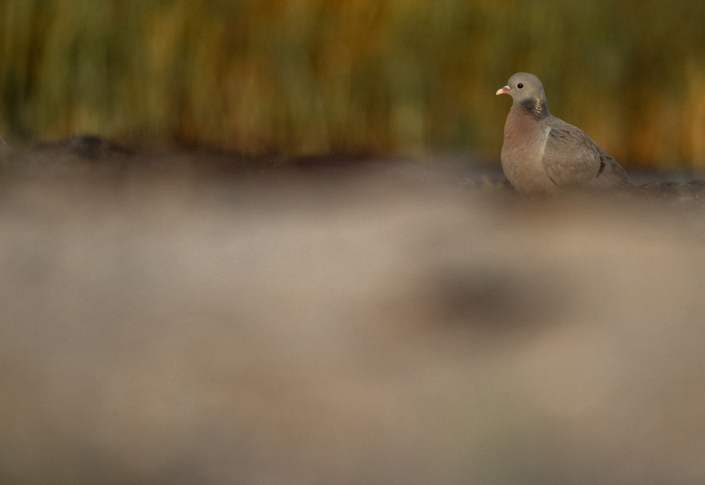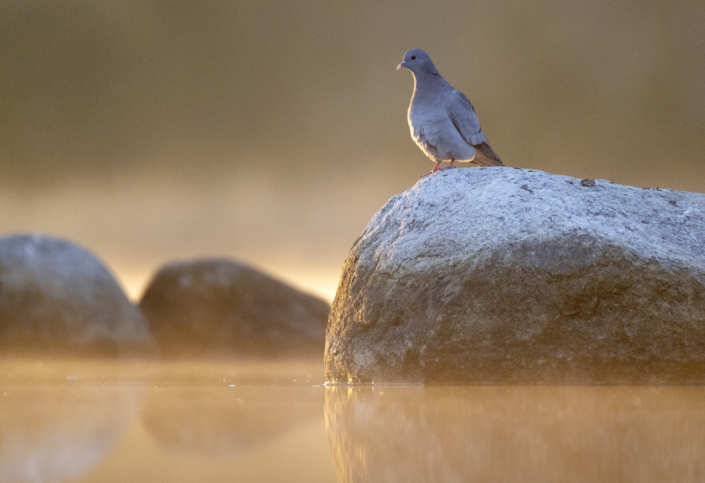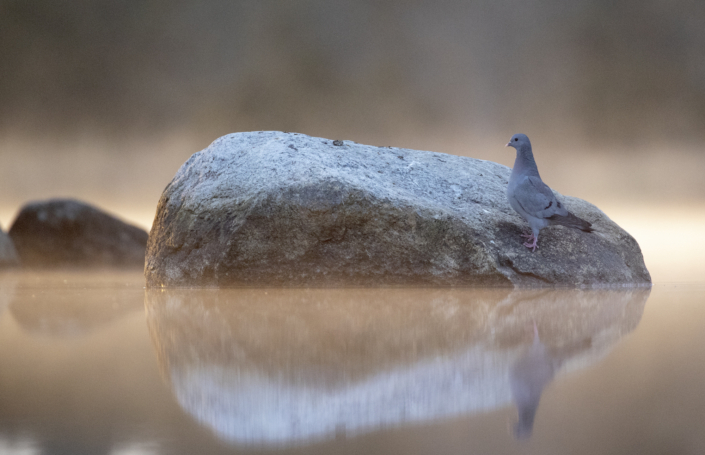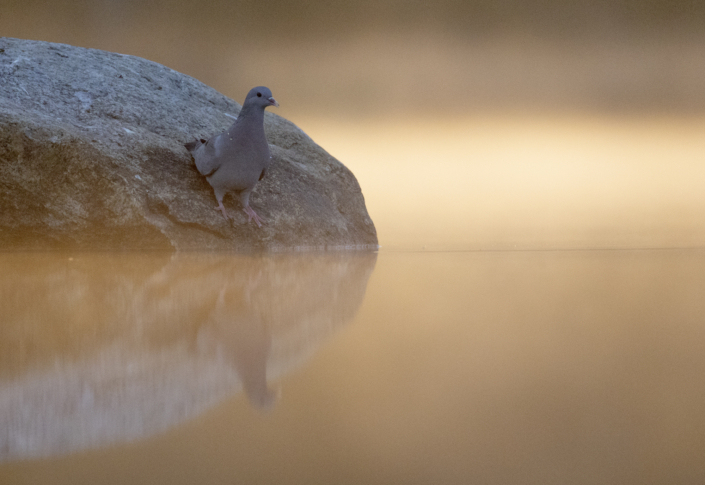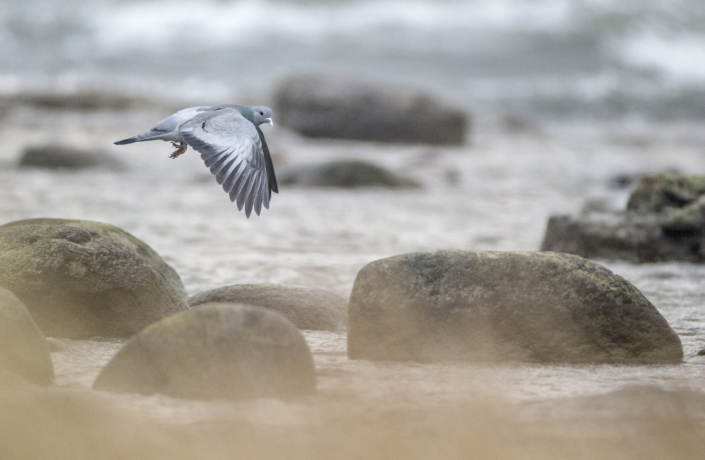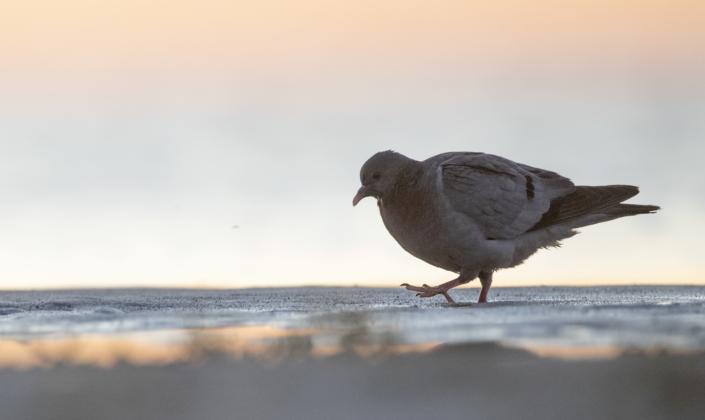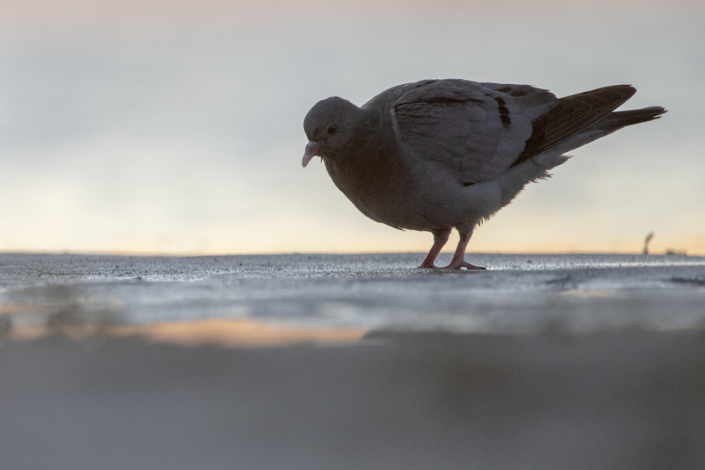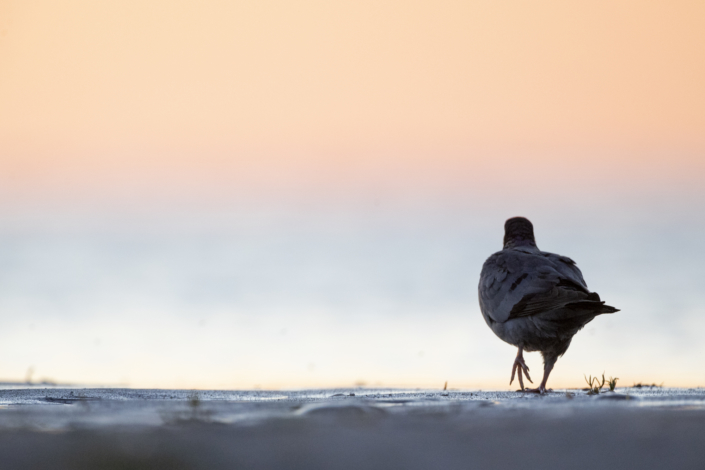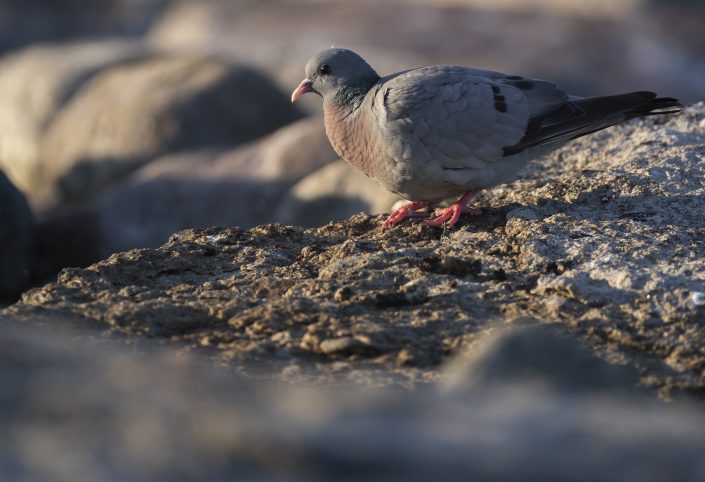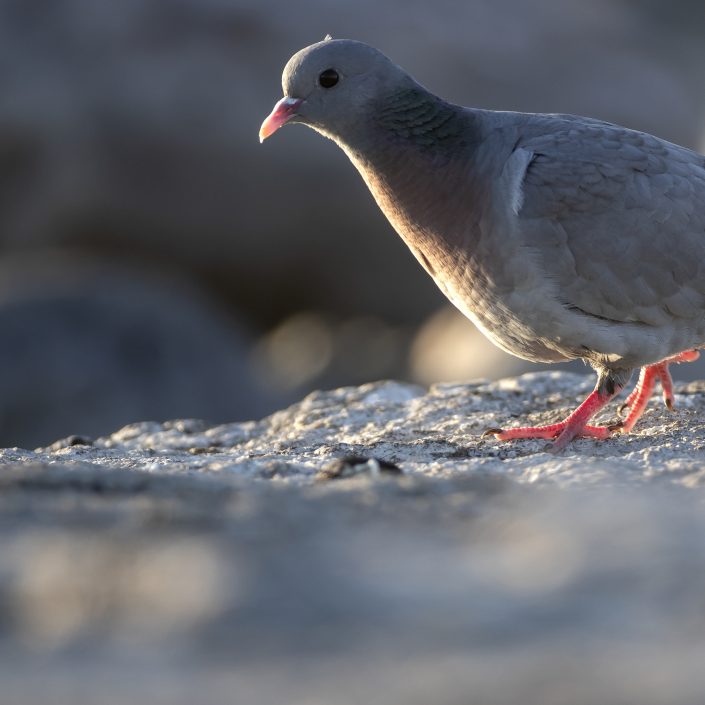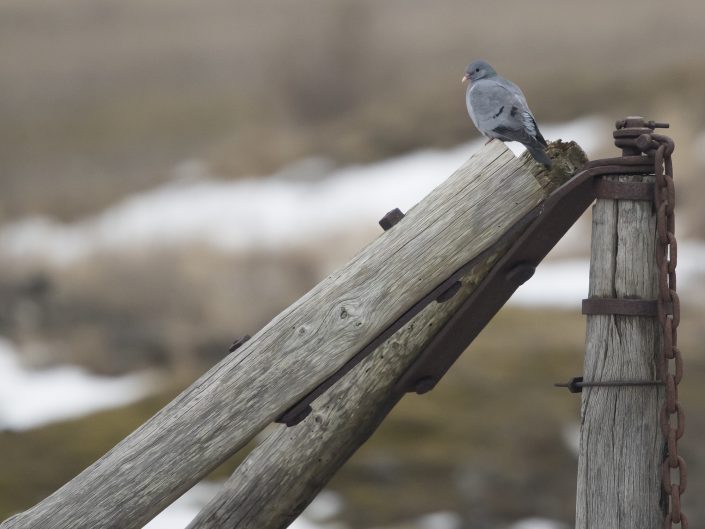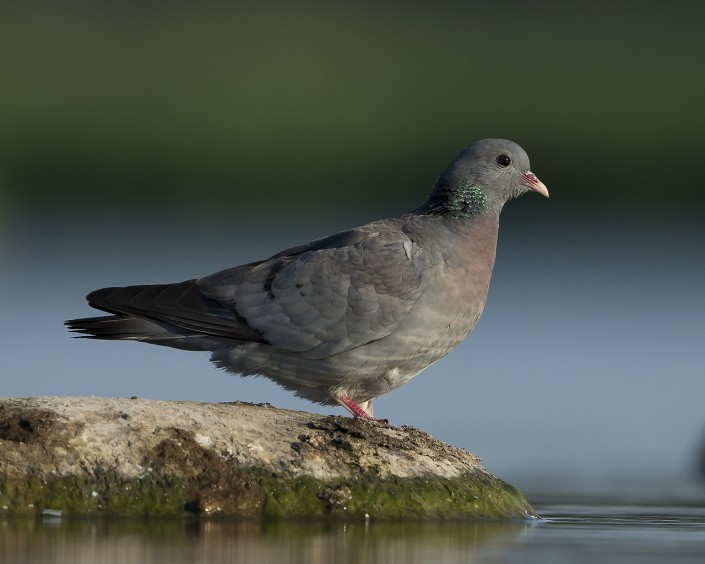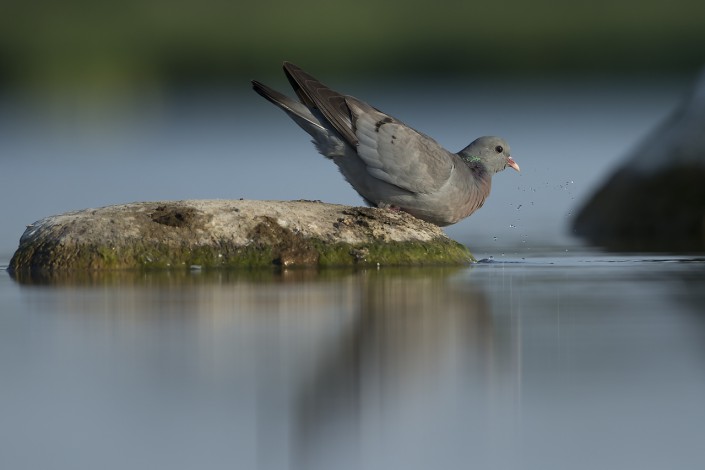This post is also available in: Swedish
Stock dove – Columba oenas
Stock dove – Columba oenas
The stock dove is the rarest of the wild European pigeons. The nest is usually in a hole in an old tree. Before deforestation, the stock dove was the most frequent pigeon, nesting mostly in oak or pine wood, but as it usually nests in cavities in trees it was normally only found in old forests. In plantations there are not as many holes to nest in, so it is scarcer. In addition, as the stock dove is double-brooded, requiring two holes for its broods. It has been observed nesting in rabbit burrows, ruins, old poplar hedges, cracks in crags or cliff faces, in ivy, and in the thick growth around the boles of lime trees. It will also use nest boxes. The cavity should be about 75 centimetres deep and the hole should be big enough to admit a fist. Though nesting material is seldom used, the squabs leave the hole very oily. Stock doves prefer to nest close together. Outside of the breeding season, stock doves may also roost in cavities.
The habitat of the stock dove is generally open country. Even though it nests in trees it does not prefer densely wooded areas. It is also common on coasts where the cliffs provide holes. Its flight is quick, performed by regular beats, with an occasional sharp flick of the wings, a characteristic of pigeons in general. It perches well, and in nuptial display walks along a horizontal branch with swelled neck, lowered wings, and fanned tail. During the circling spring flight the wings are smartly cracked like a whip.
Most of its food is plant material; young shoots and seedlings are favoured, and it will take grain as well as insects and snails. In some areas it feeds mostly on acorns and pine seeds. Its diet can include a variety of foods: berries such as bay and hawthorn, figs, cereal grains, beans, peas, and small invertebrates that are obtained while walking on the ground. During autumn migration in October, stock doves stop over at places with an abundance of acorns, supplementing the diet with shoots and leaves.
It sounds like this
Recording by Timo Tschentscher from Xeno canto



